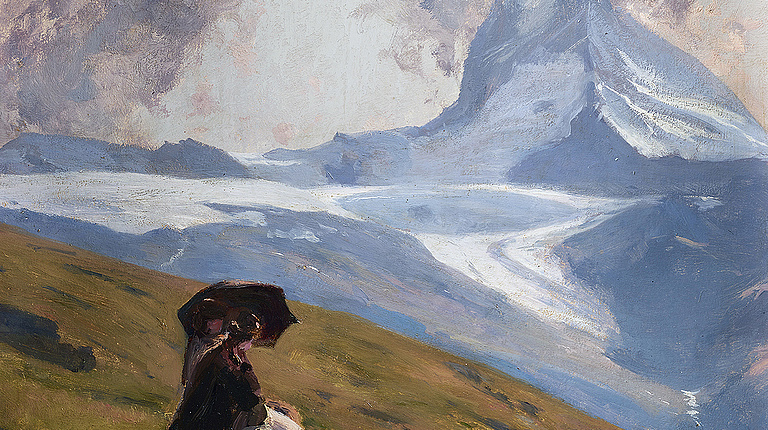Capturing the modern world
Capturing the modern world
Europe’s capital cities reflected the industrial growth of the second half of the nineteenth century. The development of railways and stations, cast-iron architecture and factories transformed the appearance of cities. While Loppé wanted to capture these urban transformations, he was more specifically interested in the clouds that he observed and sought to reproduce on canvas. Similarly to his work in the mountains, the banks of the Thames in London or of the Seine in Paris allowed him to study the effects of light on the river and in the smoke-laden sky. He also liked to paint the city from above, as can be seen in his works depicting views from the hill of Montmartre and the Eiffel Tower, for example.
The artist was fascinated by technological innovation, including photography, a new medium that he embraced. His move to Paris in 1880 gave him plenty of opportunities to capture scenes of everyday life. His shots focussed particularly on architecture: street lamps, buildings and fountains became his subjects of study. Through carefully orchestrated contrasts of light, their presence was accentuated. The photographer’s compositions were centred around structuring lines. Street lamps, barges, fountains, and the vertical lines of buildings and the Eiffel Tower are placed in relief, standing out from the background with its blurred contours.
While he practised photography as an amateur, Gabriel Loppé was a member of the London Camera Club, and was probably familiar with Pictorialism, a movement that aimed to position photography as an artistic discipline.



